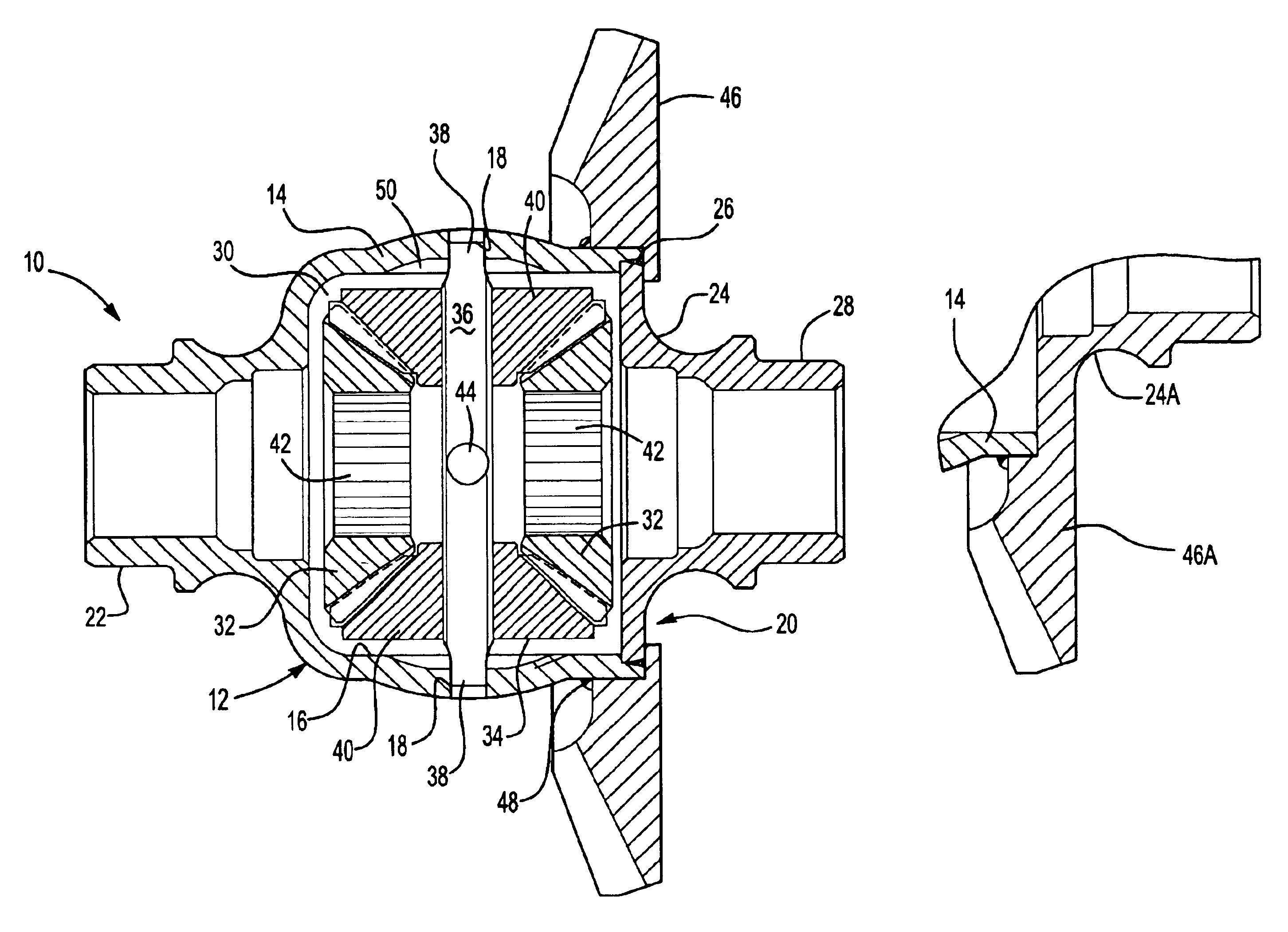Differential mechanism for a vehicle
a technology of differential gearing and vehicle, which is applied in the direction of differential gearings, mechanical devices, gearings, etc., can solve the problems of not being able to withstand the durability testing, the housing will not be as effective in rear wheel drive vehicles, and the cost of a typical vehicle transmission, so as to increase the torque, increase the torque of the typical transmission, and increase the torque
- Summary
- Abstract
- Description
- Claims
- Application Information
AI Technical Summary
Benefits of technology
Problems solved by technology
Method used
Image
Examples
Embodiment Construction
[0019]Referring to FIG. 1, a differential assembly of the present invention is generally shown at 10. A differential housing 12 includes a generally annual wall 14 that defines a generally annular inner surface 16. The inner surface 16 defines at least two receptors 18, and more preferably at least four receptors 18, the purpose of which will be explained further below. The annular wall 14 of the differential housing 12 defines an open end 20. The differential housing 12 defines a journal 22 at an opposite end of the housing 12 from the open end 20. The journal 22 may be formed apart from the housing 12 and then welded to the housing assembly, or may be formed integrally with the housing 12.
[0020]The housing 12 is formed by a spin-forming or flow-forming cold working operation that is particularly suited to produce bowl-shaped parts, and more particularly suited to form rotatably symmetrical parts. The housing 12 is formed over a chuck (not shown) by spinning rollers (not shown) tha...
PUM
 Login to View More
Login to View More Abstract
Description
Claims
Application Information
 Login to View More
Login to View More - R&D Engineer
- R&D Manager
- IP Professional
- Industry Leading Data Capabilities
- Powerful AI technology
- Patent DNA Extraction
Browse by: Latest US Patents, China's latest patents, Technical Efficacy Thesaurus, Application Domain, Technology Topic, Popular Technical Reports.
© 2024 PatSnap. All rights reserved.Legal|Privacy policy|Modern Slavery Act Transparency Statement|Sitemap|About US| Contact US: help@patsnap.com










